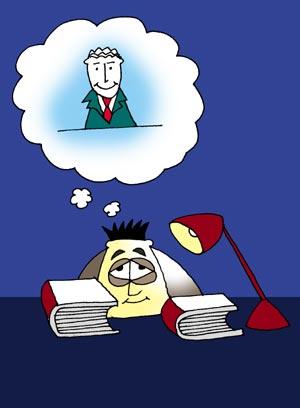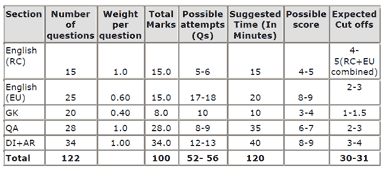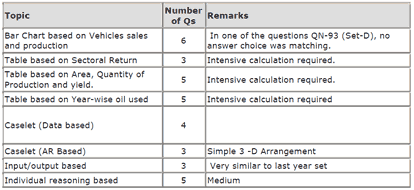 Essentially this was the first major management entrance test of the year. The 2009 edition was very similar in essence to IIFT 2008, but there was a slight change in the pattern of the test.
Essentially this was the first major management entrance test of the year. The 2009 edition was very similar in essence to IIFT 2008, but there was a slight change in the pattern of the test.
Unlike last year, when there were six sections, this time there were four with one of the sections (English) having two parts: Part I (reading comprehension) and Part II (English usage). The total number of questions was reduced to only 122 in comparison to 150 questions in the 2008.
There were also about seven or eight questions in the test paper that had errors ranging from no correct option choice, language ambiguity, inconsistency in the data provided, self-contradictory data, etc.
Salient features:
1. Number of sections: 4 (English had two subsections)
2. Number of options for each question: 4
3. Each incorrect answer carried one third (1/3rd) negative marks instead of one fourth (1/4th) last year
4. Variation of weight, as compared to the previous year
5. Specific mention of sectional cut-offs which was not mentioned last year
Here is an overview of how you should have attempted this paper:

Important note:
The table only suggests a possible score. The actual cut-off for receiving a call for the second round of selection may vary. As per the experts of Career Launcher, a score of around 31 may fetch you a call. Please note that IIFT also considers work experience as an important parameter before issuing call letters.
English section: Part-I (Reading Comprehension)
Out of the four RC passages in the section, two passages (passage based on "sugar" and the other based "essential character of trade cycle") could be attempted within 15-16 minutes .The other two passages were quite lengthy and should have been avoided during the test. Moreover, the questions were fact-based and asked for direct data from the passage.
One could have just scanned through them and answered the given questions. The composition of the section was as follows:

English section: Part II (English Usage)
The questions in this section comprised antonyms, synonyms and grammar; fill in the blanks and para jumbles. The level of difficulty ranged from easy to medium. Fill in the blank questions tested a candidate's knowledge of the contextual meaning. The grammar questions were on the GMAT pattern and were very easy and direct. One of the grammar questions (From what landscapes or flowerbeds would...) was flawed, as none of the given options was
grammatically correct. Keeping in mind the variety, one could have chosen questions from one's area of interest and maximised one's score.
The composition of the section was as follows:

General Awareness section (GK)
This section of IIFT 2009, unlike the previous three years, had no question from static general knowledge. This section had questions primarily from business GK and current GK. There were 15 questions from business GK and five from current GK. The level of difficulty of the GK section was easy as compared to previous years and had very few difficult questions. A person of average general awareness could attempt 10-12 questions.
Quantitative Ability section
QA section had reasonably high level of difficulty and looked slightly more difficult than that of the last year. The presence of 'None of the above' as one of the answer choices in as many as 12 questions made the test look more difficult. There was a definite stress on arithmetic and geometry. These two topics comprised almost 66 per cent of the section. There were four questions based on PNC and probability but there were no questions on the number system. The section was difficult but on a closer look one could attempt 8-9 questions with ease in 35 minutes.
It was a bonanza for Career Launcher students as 7-8 questions of the section were very similar to the questions present in CL study material. Moreover, there were as many as four questions (Qno: 25, 27,29 and 31, SET-D), which seemed to have been picked from previous CAT papers with slight changes made.
The composition of the section was as follows:

DI +AR section
This section of the test appeared tough and involved intensive and lengthy calculations. A lot of data was given in each set. On the closer look one could have found 1-3 questions in almost all the sets that could be cracked with ease. It cannot be denied that a few of the questions were so calculation-intensive that they could not be solved in the testing conditions.
There were 10 questions based on AR out of which 3-4 questions could be attempted.
The composition of the section was as follows:

Disclaimer: All information on cut-offs, analysis, answer key, solutions and scores are based on independent analysis and evaluation made by Career Launcher. We do not take responsibility for any decision that might be taken, based on this information.